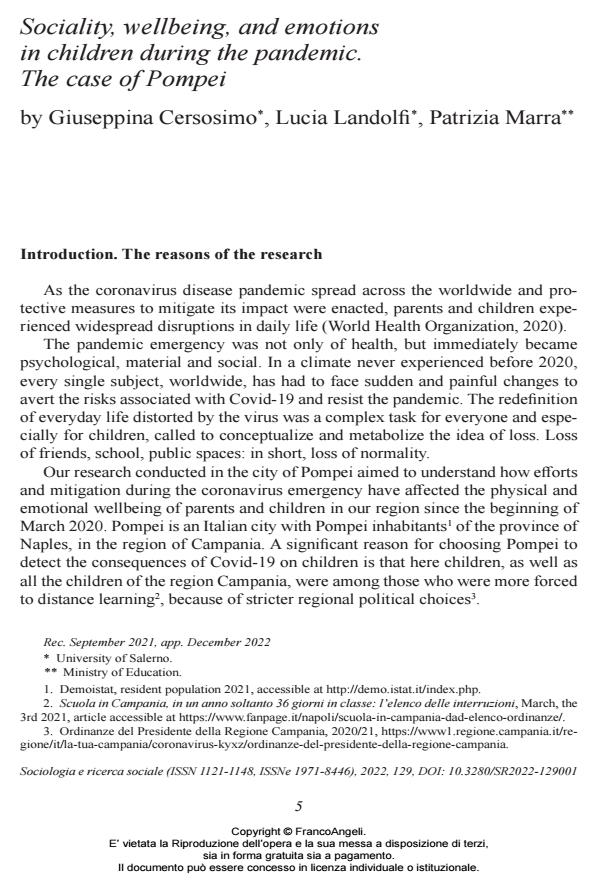Sociality, wellbeing, and emotions in children during the pandemic. The case of Pompei
Journal title SOCIOLOGIA E RICERCA SOCIALE
Author/s Giuseppina Cersosimo, Lucia Landolfi, Patrizia Marra
Publishing Year 2023 Issue 2022/129
Language English Pages 28 P. 5-32 File size 582 KB
DOI 10.3280/SR2022-129001
DOI is like a bar code for intellectual property: to have more infomation
click here
Below, you can see the article first page
If you want to buy this article in PDF format, you can do it, following the instructions to buy download credits

FrancoAngeli is member of Publishers International Linking Association, Inc (PILA), a not-for-profit association which run the CrossRef service enabling links to and from online scholarly content.
Our objective in this work was to show how the pandemic and mitigation efforts affected the physical and emotional well-being of parents and children in our research context through early March of 2020. The methods used in our research include the analysis of children’s drawings, as well as interviews with teachers and family members. During this period of the restriction, our research verified the presence of reduced physical activities, eating disorders, increased requests for and reliance on video games, and screen time for entertainment, all fears related to isolation, restlessness dreams, emotional withdrawal, and sadness/depression.
Giuseppina Cersosimo, Lucia Landolfi, Patrizia Marra, Sociality, wellbeing, and emotions in children during the pandemic. The case of Pompei in "SOCIOLOGIA E RICERCA SOCIALE " 129/2022, pp 5-32, DOI: 10.3280/SR2022-129001